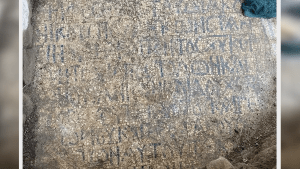A new archaeological study in Jerusalem is lending credence to the historical accounts of 1st-century historian Flavius Josephus. An investigation of Roman ballistae used to bombard the Holy City in 70 AD suggests that Josephus related a faithful depiction of the battle, down to the distance the projectiles traveled.
According to the Times of Israel, experts were able to verify the accounts of Josephus by subjecting 2,000-year-old ballistic stones to computer analysis. The ballistics were mostly excavated from Jerusalem’s Russian Compound, which is the site where experts believe the city’s Third Wall stood at the time of its conquest. Archaeologist Kfir Arbiv explained:
“With the help of the computer, I located all the ballista exactly where they were found. I took into account the local topography and the location of the Second Temple-period city fortification walls, and I made ballistic calculations, including the launching angle, and the throwing distance of the stones,” Arbiv told the Times of Israel.
Distance
The collected evidence suggested that the ballistas launched their payloads from a distance of between 100 and 400 meters. This figure falls perfectly in line with the 300 to 400 meter distance that was described by Josephus in his book The History of the Jewish War Against the Romans.
Furthermore, Heritage Daily reports, the location and concentration of the majority of the ballistics suggest the siege weapons were positioned in an area known today as “Cat Square.” This evidence also supports the records of Josephus, who wrote that Titus – the Roman general who led the siege and would later become emperor – instructed his forces to invade from the Northwest.
Arbiv called the team’s findings “very exciting” and noted that this is the first instance in the study of ancient Jerusalem in which the remains of a battlefield have corroborated a first-hand historical record. In this case, Arbiv feels that the evidence has “proved” the historical records of Josephus Flavius to be accurate. This is especially important as Josephus was one of the most prolific historians of his time and his works have fueled much of what we know of the Roman Empire.


